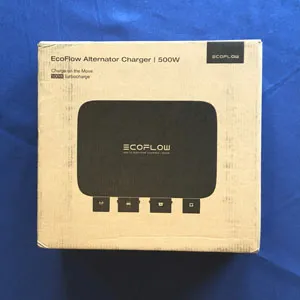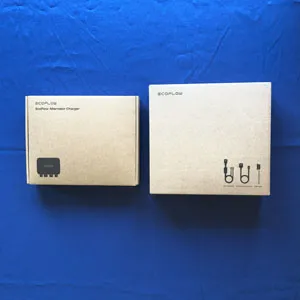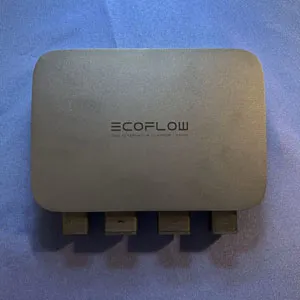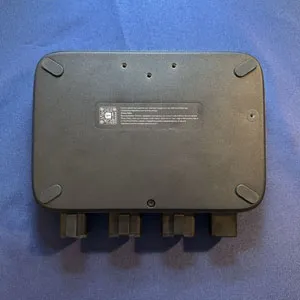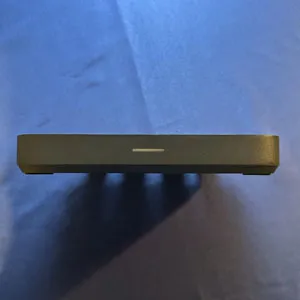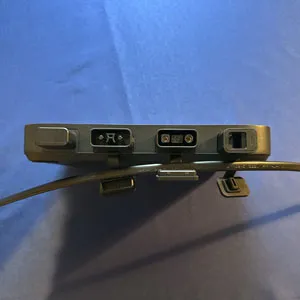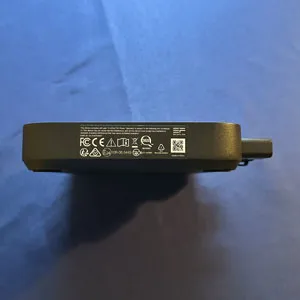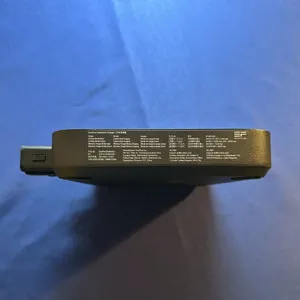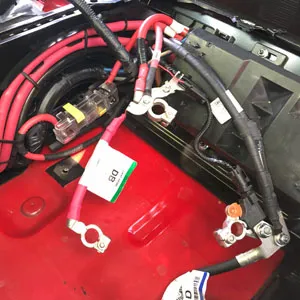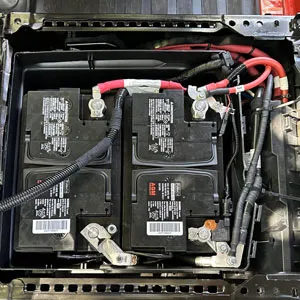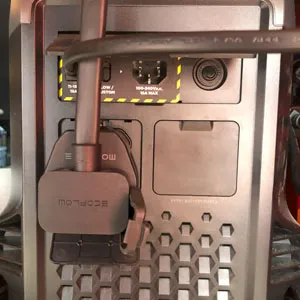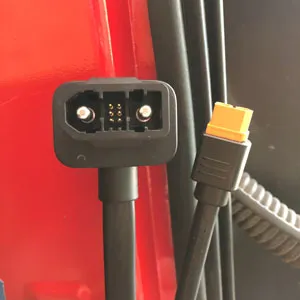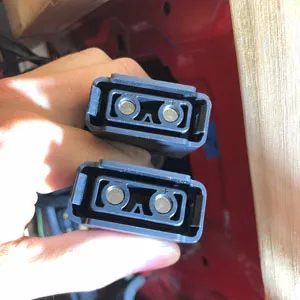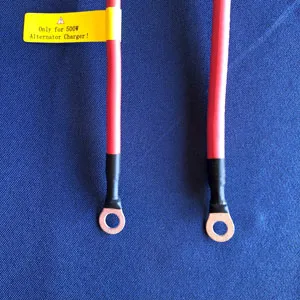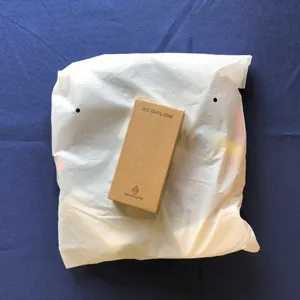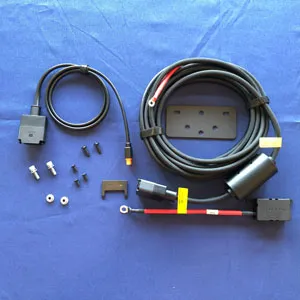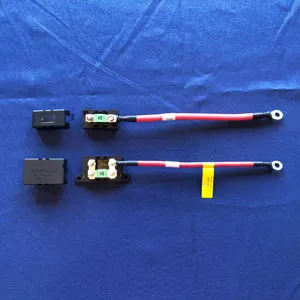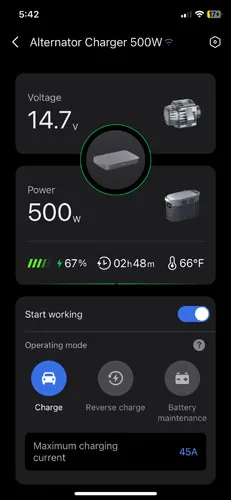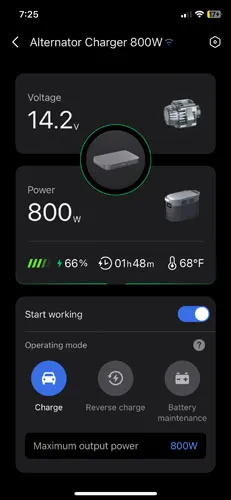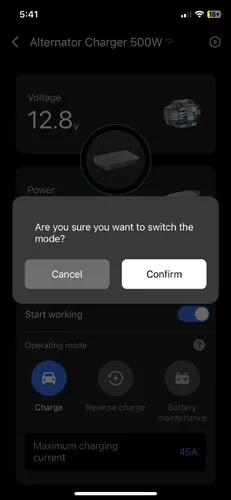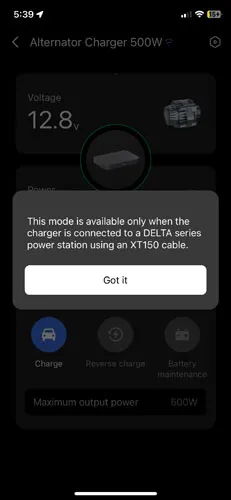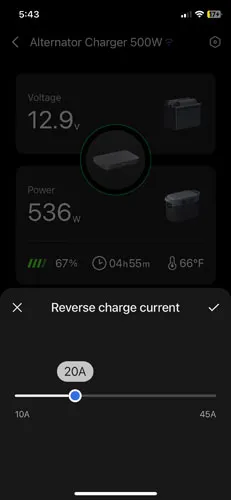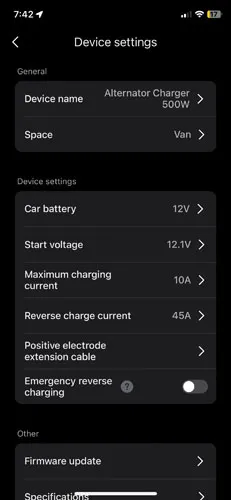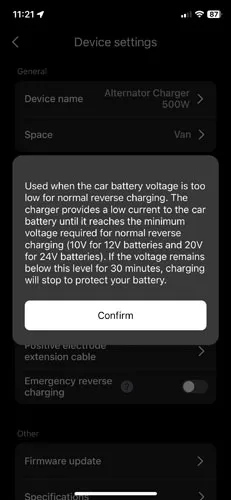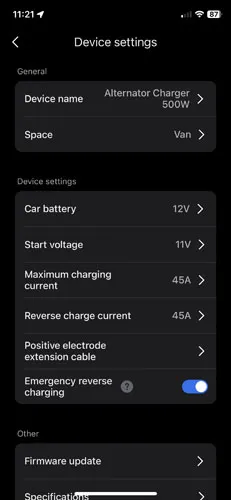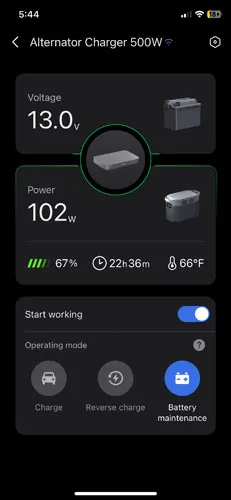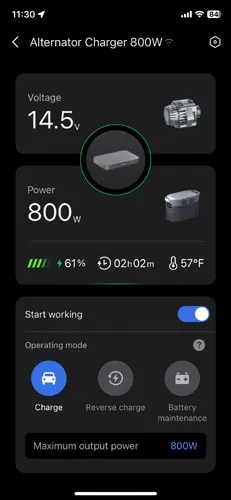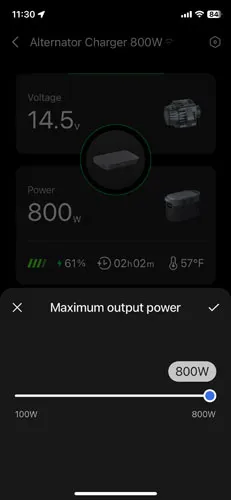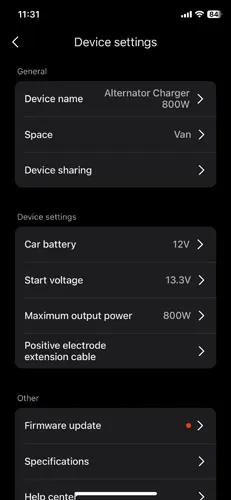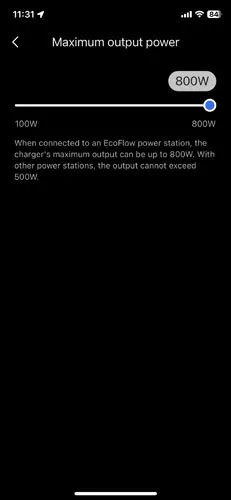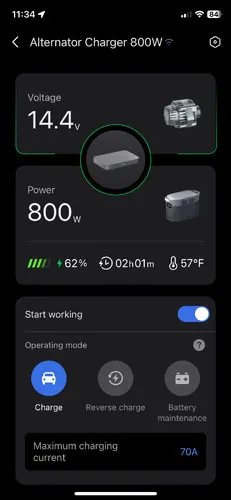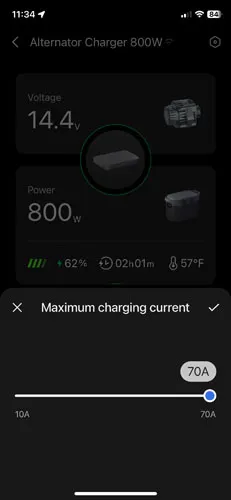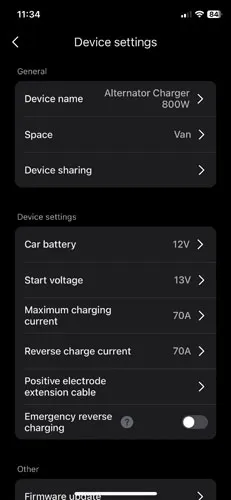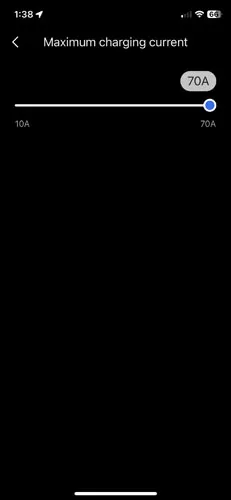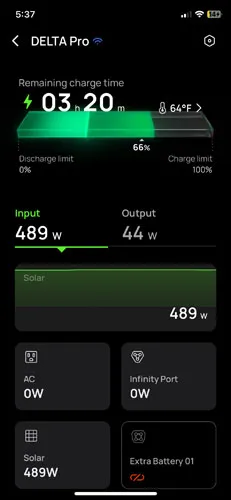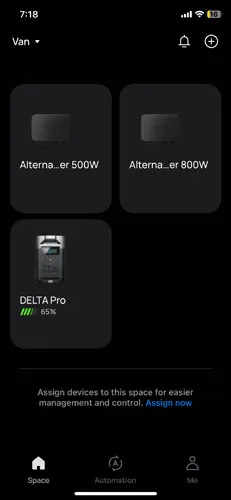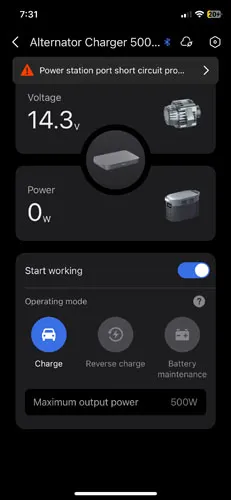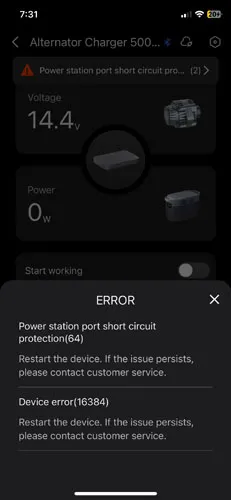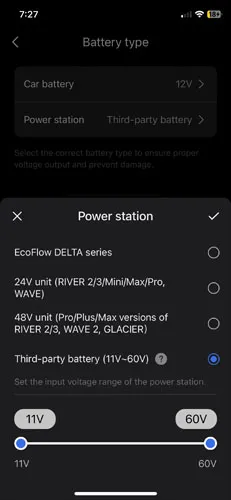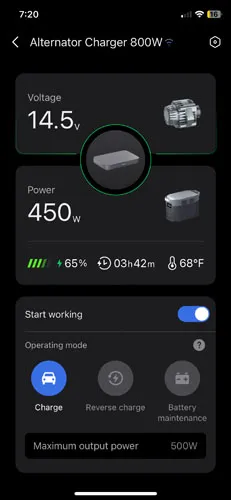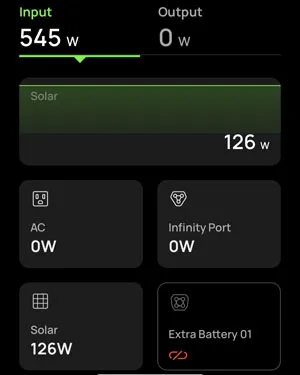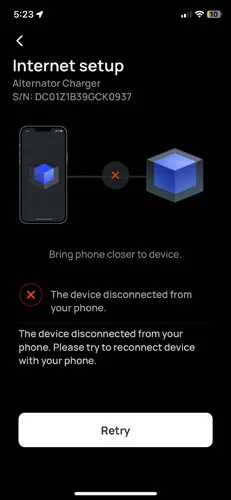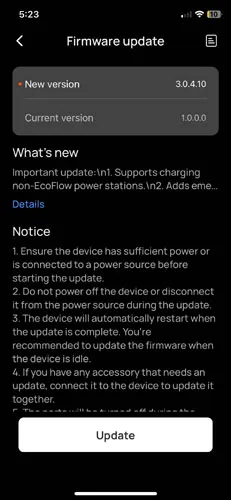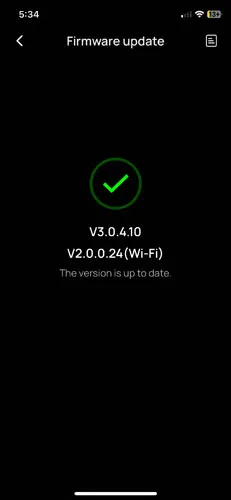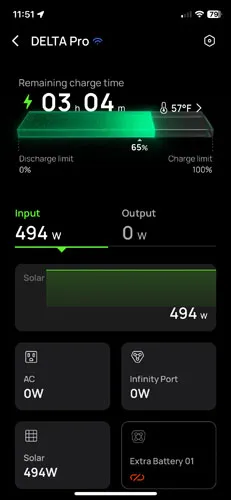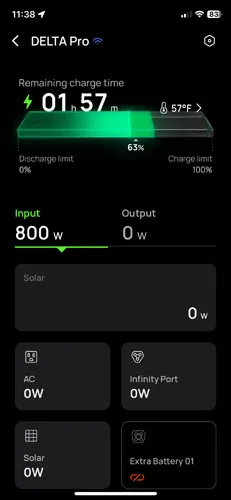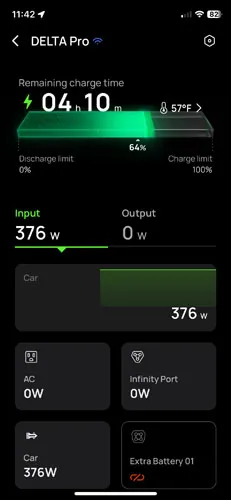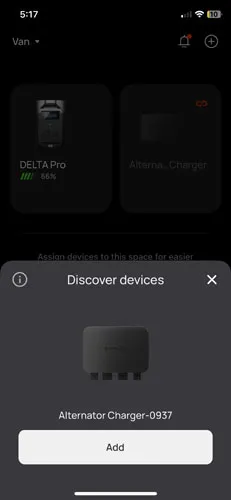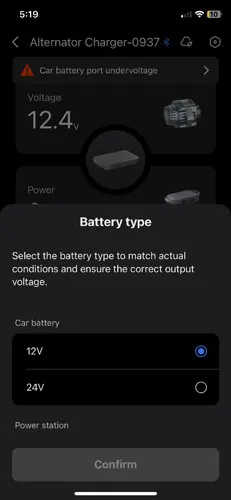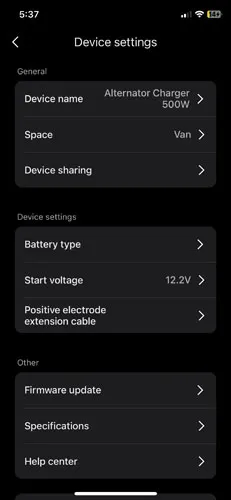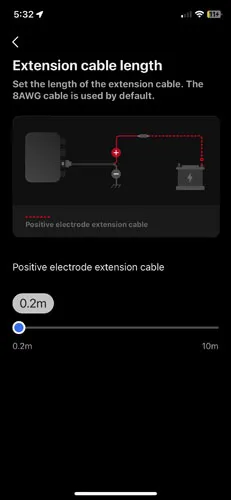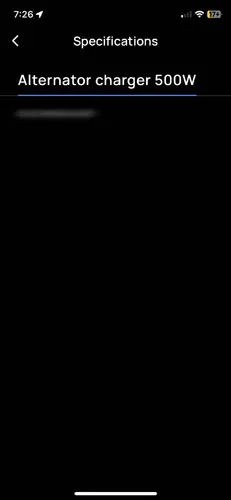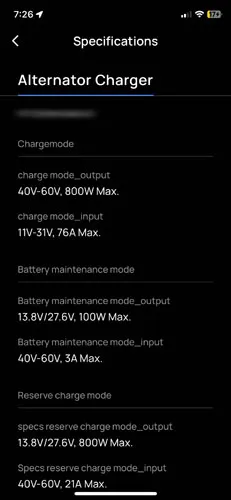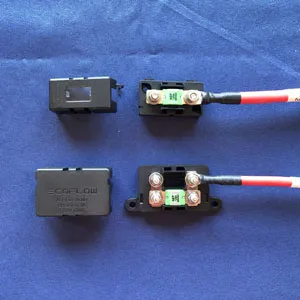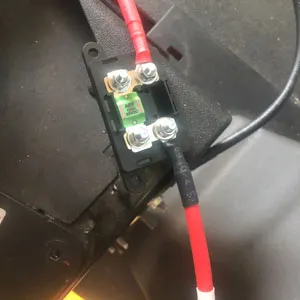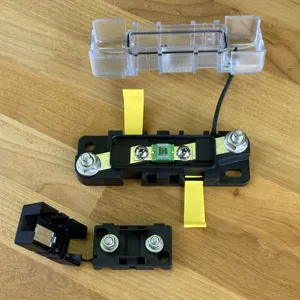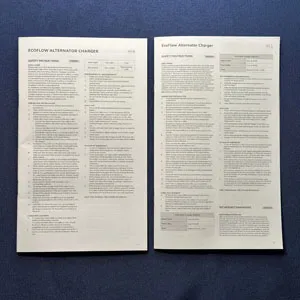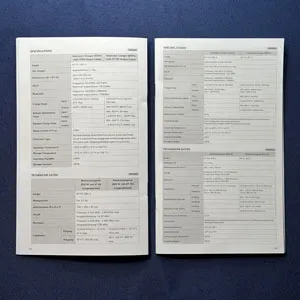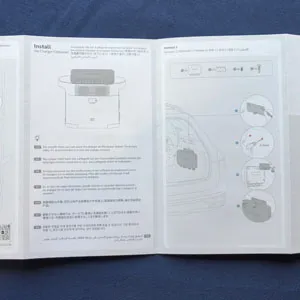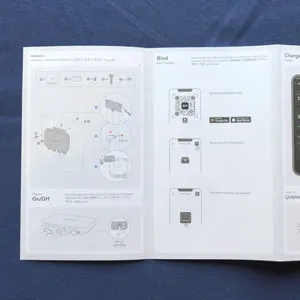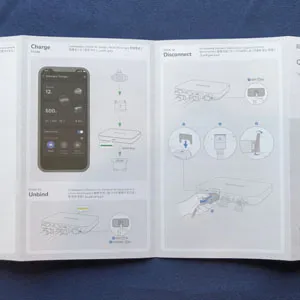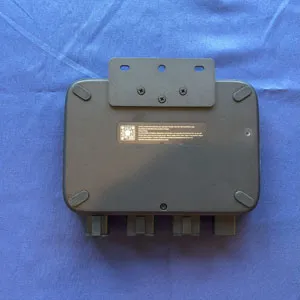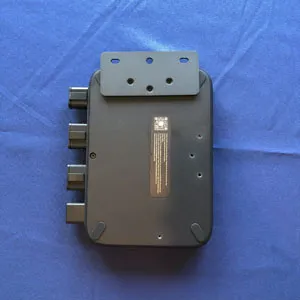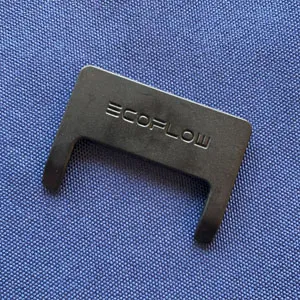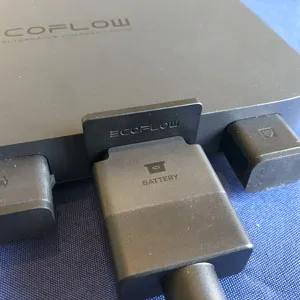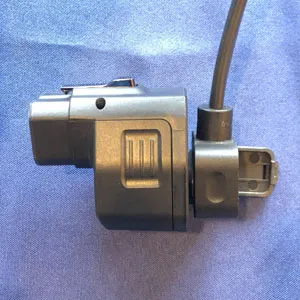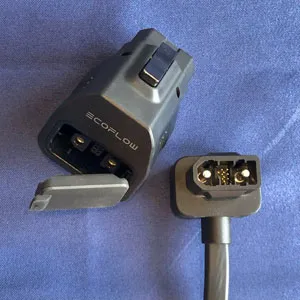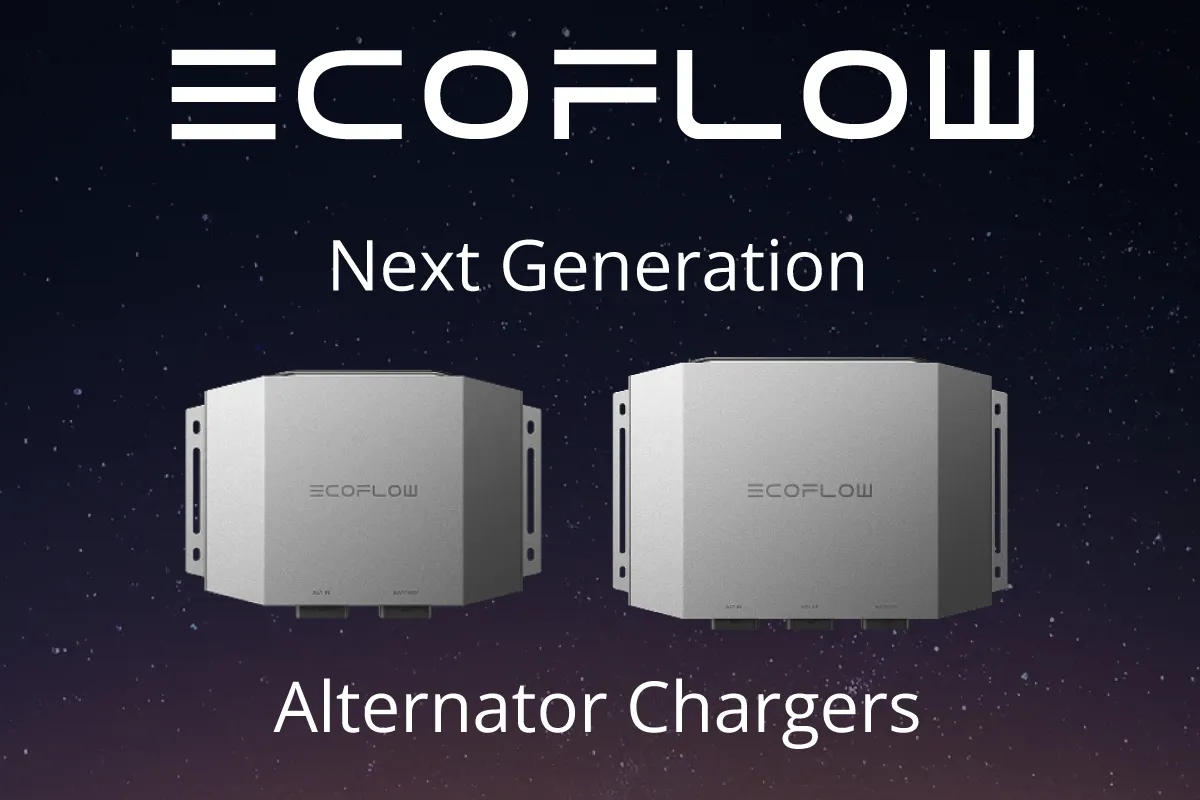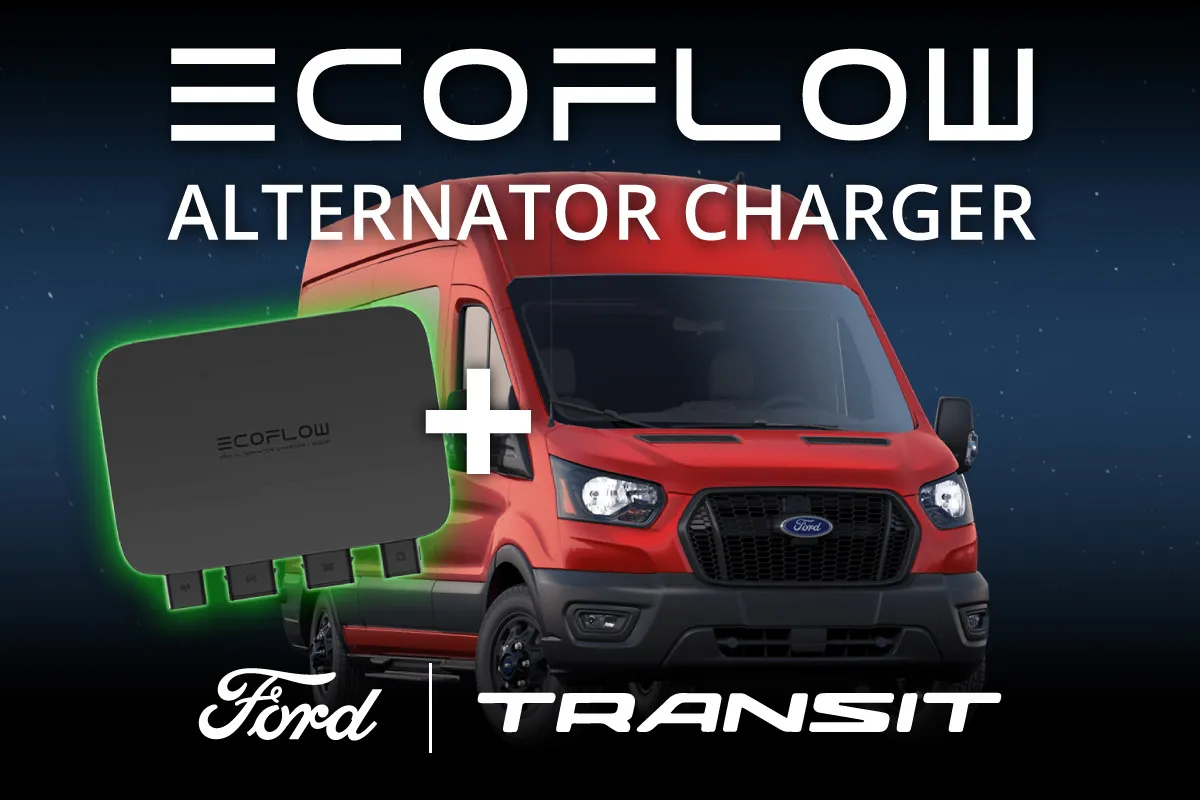EcoFlow Alternator Chargers 500W and 800W Model Review
Updated: September 25, 2025
Extend your off-grid adventures with EcoFlow’s Alternator Chargers! I tested both the 500W and 800W models to see which is the best fit for your van, truck, or RV setup. EcoFlow’s Alternator Chargers are similar to DC-to-DC chargers, pulling energy from your vehicle’s alternator to keep your power station topped up while driving 🚙⚡🔋. When used with the XT150 cable, it also unlocks reverse charge and battery maintenance modes, adding even more flexibility for off-grid power solutions in vans, RVs, and overland setups.
Short on time? Check out my summary review (2 min) instead of this detailed one (16 min).
I received my beta 500W Alternator Charger with XT60i cable from EcoFlow a few days ago and here is my experience so far and how it compares to the 800W Alternator Charger with XT150 cable. I have used the 800W model for about a year now for trips ranging from single-day to week-long to a full-month 📅 on the road.
The new unit looks practically identical to the 800W model except for the difference in cable diameter, XT60i cable end (instead of XT150), and an upgraded fuse block. 🤩
Overall, I’m very pleased with the product, however I did find one frustrating issue (when used with the new XT60i cable) and a few minor annoyances and suggestions. I will go into detail on these items to help you decide what does or doesn’t matter to you, and so EcoFlow can use it to improve the product in future versions.
My Setup
All my tests were run on an EcoFlow Delta Pro hooked up to a Ford Transit EcoBoost with a 250A alternator. The cables supplied with the 800W model are connected to my van’s dual batteries 🔋🔋 (without bypassing the BMS on the negative side, per a conversation I had with a Ford BBAS Services Engineer). The cables supplied with the 500W model are connected to CCP1 (Consumer Connection Point 1). CCP1 isn’t a good location to connect the 800W model, as CCP1 is limited to 60A. Since the Delta Pro doesn’t have an XT150 port, tests requiring it were done with the Smart Generator Adapter.
Currently I use my EcoFlow vanlife setup to power the following items: 🍳 induction cooktop (1800W), 🍞 toaster (730W), 🔥 VELIT gasoline heater, 🧊 Dometic CFX3 75DZ (fridge/freezer), 💨 Maxxfan Deluxe fans (x2) , 💻 laptop, 📱 phones/tablet, 💡 rechargeable lights, 🔋 rechargeable power banks, etc. I’ve even used it during a power outage to run a full-size refrigerator and an additional freezer, simply by running an extension cord from my van into my house 🏡.
Cable Differences
The 500W cables are much more flexible. The XT60i cable also doesn’t have the giant ferrite brick. This makes routing the cables easier than the ones that came with the 800W model.
The 500W model works with both the supplied cables (8 AWG and XT60i) AND the larger gauge cables (6 AWG and XT150) that came with the original 800W model. The 800W model also works with the new XT60i cable (but should not be used with the 8 AWG cable due to fire risk 🔥🧯). I tested a mix and match of both cable types on the 500W model. Interestingly, using an XT150 vs XT60i cable DOES result in different functionality which I will highlight in detail below.
Cable Options
EcoFlow offers 3 different cable options for purchase separately:
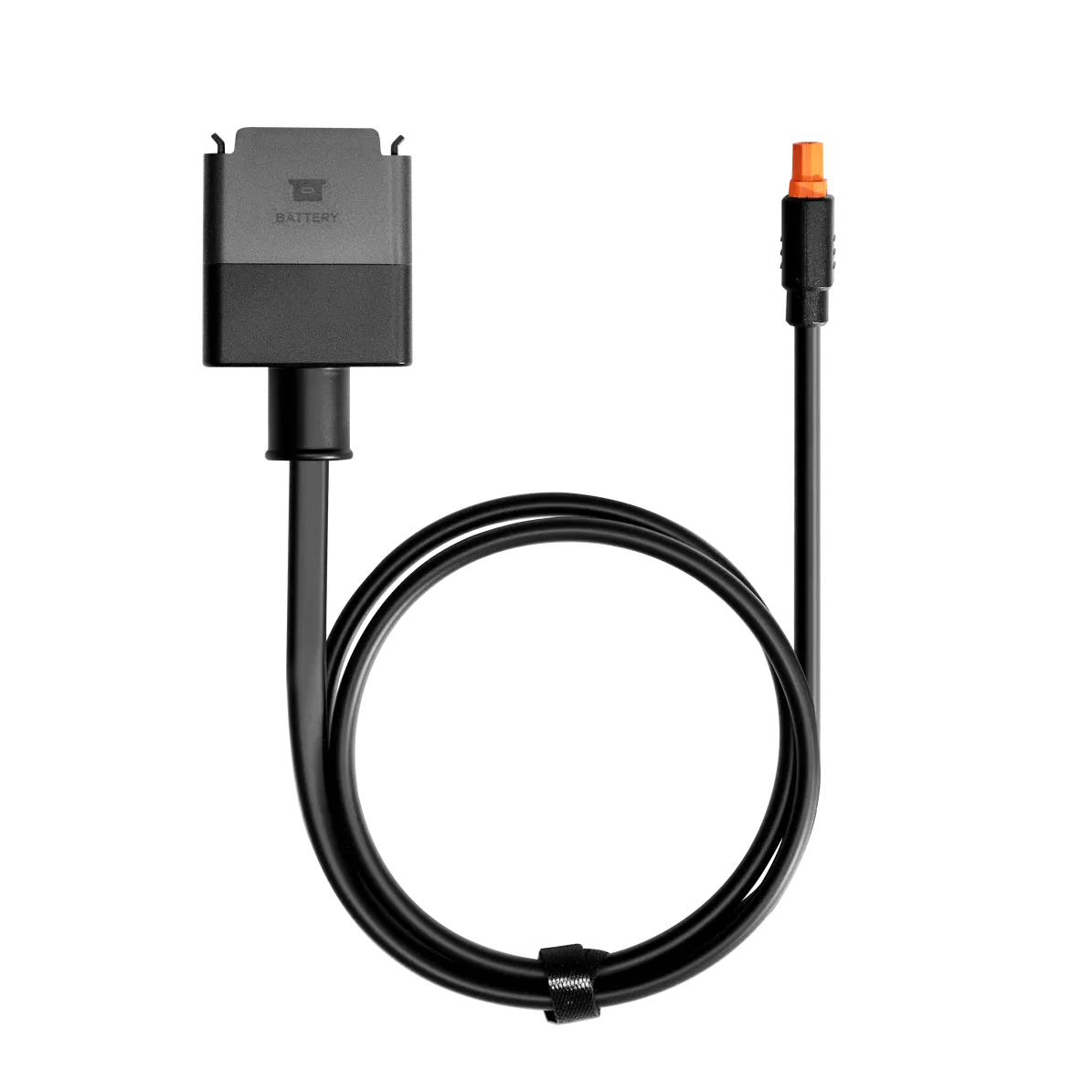 XT60i Output CableLength: 1m
XT60i Output CableLength: 1m
Price: $79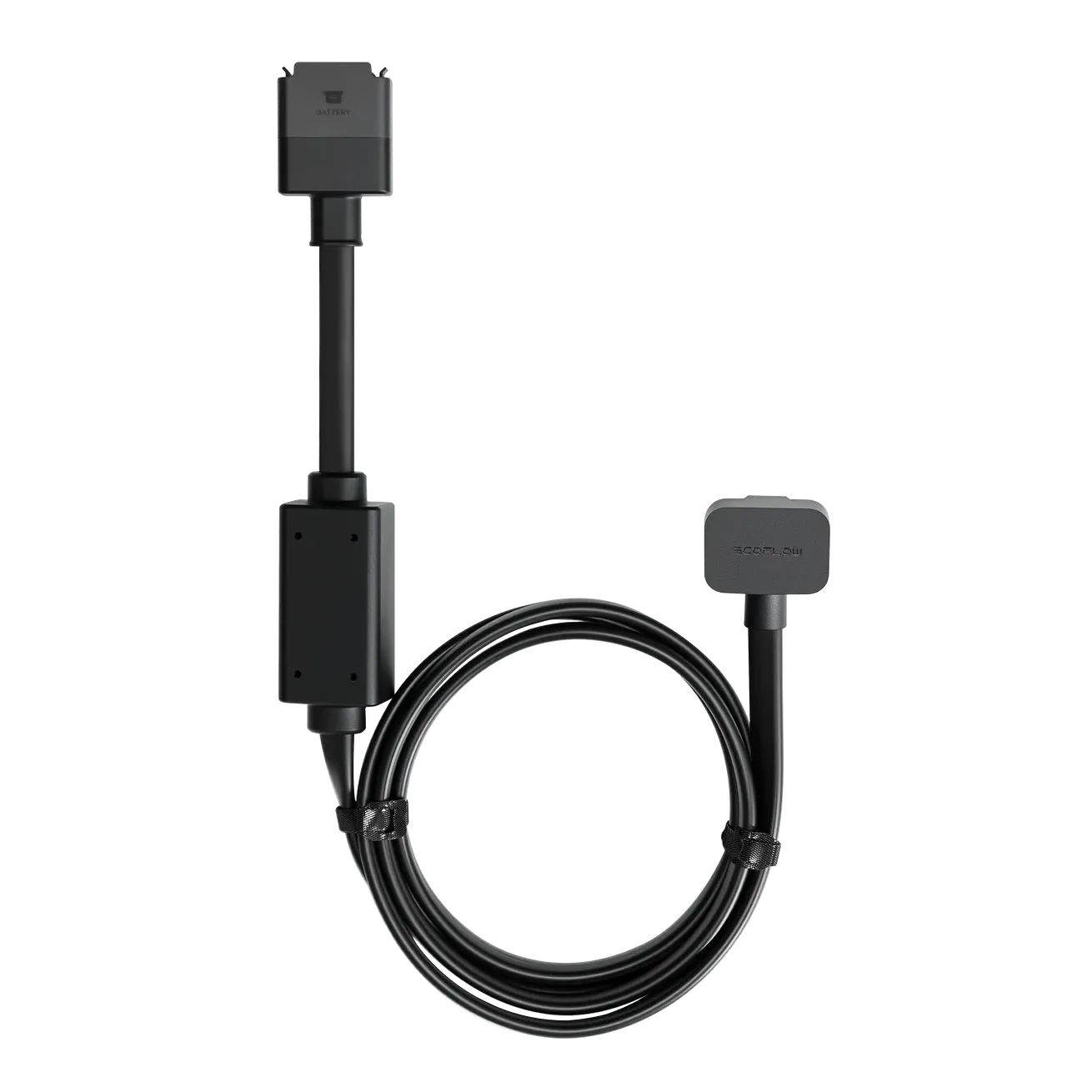 XT150 Output CableLength: 2m
XT150 Output CableLength: 2m
Price: $99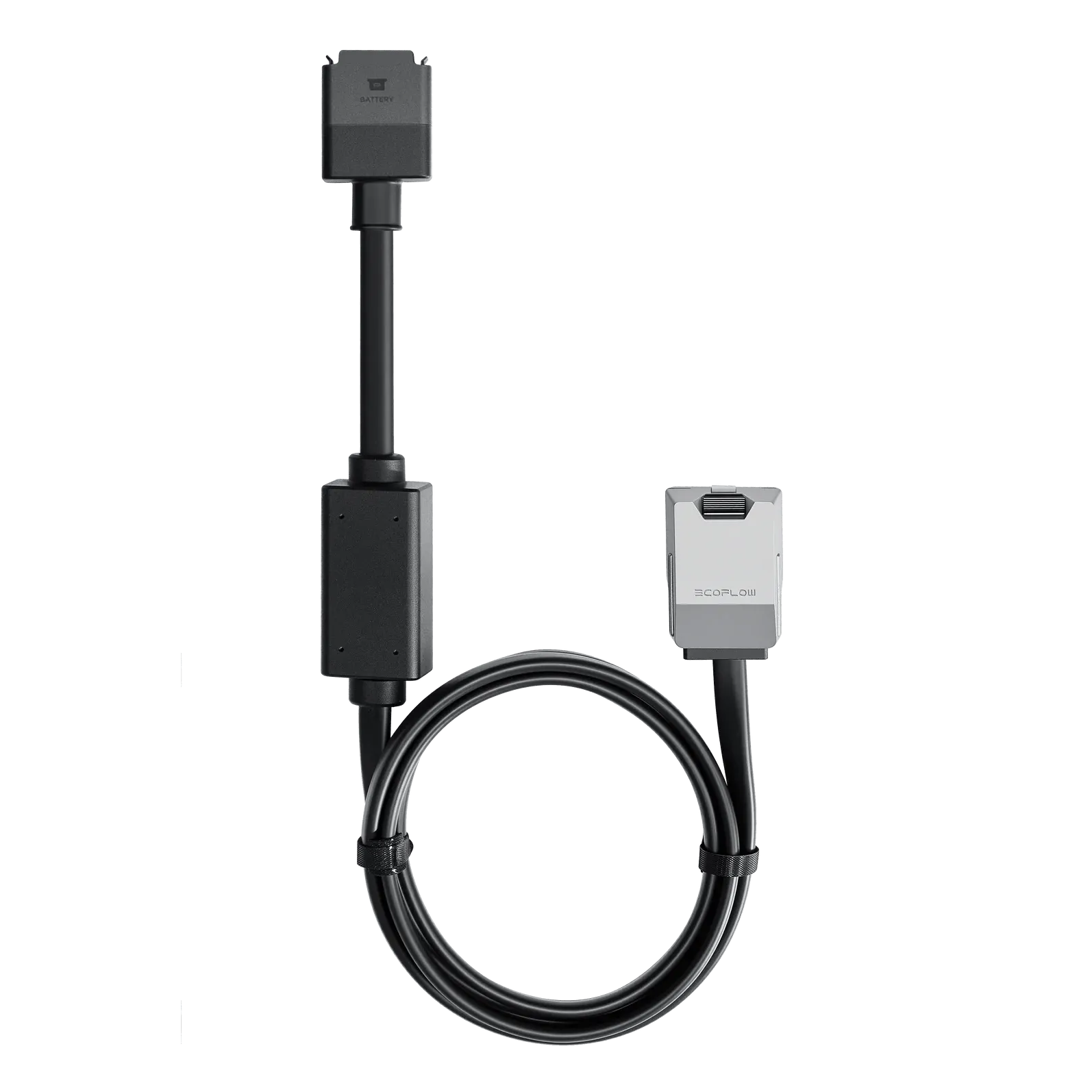 Custom Fit Output CableLength: 2m
Custom Fit Output CableLength: 2m
Price: $109
I would love to test this as I believe I wouldn’t need my Smart Generator Adapter.
Ideally when ordering a device, customers would have the option to select which cable type they would like included. It feels like a waste to include a cable that a customer potentially doesn’t need and then try to sell them a separate cable for $79+.
Cable Lengths
With my vehicle’s 12V battery, the Alternator Charger boosts the voltage to 48V. Since it’s more efficient to transfer electricity over distances at a higher voltage (think high-voltage transmission lines), I don’t understand why EcoFlow has the longer cable carry 12/24V and the shorter cable carry 48V. Swapping the cable lengths would allow the Alternator Charger to be mounted in the front of a vehicle making the on/off button potentially more accessible. I find it strange the cable lengths aren’t swapped to increase efficiency or at least provide an option for people who would prefer this.
Modes and Charge Rates
When using the 500W model with the supplied XT60i cable you can only charge the power station at a fixed max rate of 500W. The reverse charge and battery maintenance modes are disabled as is the ability to adjust the charge rate 😞. However, if you use an XT150 cable, the 500W model allows reverse charge and battery maintenance modes and also allows the charge rates to be adjusted 😃. I would love to see EcoFlow improve this experience further and allow the charge rate to be adjusted (100-500W) when using the XT60i cable.
| 800W | 500W | |||
|---|---|---|---|---|
| XT150 | XT60i | XT150 | XT60i | |
| Charge | 100-800W | 500W | 100-500W | 500W |
| Reverse Charge | 100-800W | -- | 100-500W | -- |
| Battery Maintenance | 100W | -- | 100W | -- |
| Auto-Off | >12h 1 | 30s | >12h 1 | 30s |
1) Unsure how auto-off is determined with the XT150. Mine stays on for quite a while; possibly multiple days.
Charge Mode
Designed as the primary charging mode, this feature enables you to reliably charge your power station using your vehicle’s alternator. This ensures a full battery upon arrival at most destinations (depending on drive time), making it ideal for medium-to-long road trips where access to traditional power outlets 🔌 (aka shore power) is limited. 😎
Reverse Charge Mode
Imagine being stranded with a dead vehicle battery and no cell service. Even if your power station is depleted 💀, solar charging ☀ combined with the reverse charge 🔁 feature allows you to recharge your vehicle and get back to safety. While I have never been in a situation where I had to rely on this feature, with the XT150 cable it’s nice to know it’s there if I need it. Unfortunately, reverse charge isn’t available when using the XT60i cable, but it would make an awesome improvement if EcoFlow can make it work. Also, it is important to note that reverse charge is not the same as jump-starting a vehicle.
Emergency Reverse Charging
EcoFlow also added a new emergency reverse charging 🚨 feature which is available on both the 500W and 800W models when using the XT150 cable. This allows the EcoFlow to recharge batteries when the voltage is too low for normal reverse charging ⚡. The charger provides a low current to the vehicle battery until it reaches the minimum voltage required for normal reverse charging. If the voltage remains below this level for 30 minutes ⌚, charging will stop to protect your battery.
Maintenance Mode
Currently, the maintenance mode charging rate is fixed at 100W, which limits user control 😕. Providing an adjustable rate, similar to the reverse charge mode would be a welcome addition. For comparison, the NOCO Genius 2D battery maintainer charges at 2A (28W max). I have had a great experience with a NOCO Genius 2D I installed on a different vehicle.
Auto Shut-Off Issue
When paired with the XT60i cable, both units turn off after 30 seconds of not being used to charge ⌚. I’m unsure if the device is going to sleep 😴 or just turning off (all the lights are off and it disconnects from the app so I will assume the device is off). This would be a major pain point for me in my frequent use of the product. Perhaps this issue is only encountered on some power stations 🤷♂️, though I confirmed it on a Delta Pro and a Reddit user reported it with a Delta 3 Plus (I don’t have access to other power stations to test it with).
The timeout with the XT150 cable might not be perfect, but it is quite a while as it seems to work fine for a day or so without use. 💡 Ideally it would detect the voltage change and wake up at least after 5 minutes ⌚ or so of driving 🚙. Having to remember to go to the back of my van and push the tiny button (which in my build is difficult to reach) just to turn it on again can be annoying and would be frustrating with the XT60i cable. Additionally, many vehicles have "smart alternators" that adjust voltage output to boost fuel efficiency, but this can cause the charger to shut off while driving 😱.
I would love to know how much power is consumed when the unit is in its disabled / sleep mode (when red light is on, but power used by the device not just the light) as parasitic drain can add up over time.
Now Amps Instead of Watts
Prior to the most recent update, the 800W model allowed you to set the max charge rate in Watts (100-800W). This has been changed to max Amps (10-70A). This allows you to easily restrict it to match the max Amp limits of your vehicle’s electrical system. I would like to see EcoFlow update the UI to also state the approximate calculated Watt value so we don’t have to do math in our head 🤯.
Missing a Few Watts
When using the XT60i cable both chargers would often show the full 500W in the app (or close to but would fluctuate some), however in the app, the Delta Pro would never show the full 500W and would always be a few Watts less 🤷♂️. When I ran the same test with the XT150 cable I did not encounter this difference.
Attempted Dual 800W and 500W Chargers 👨🔬

I was really hoping I could use both the 800W model AND the 500W model simultaneously on the same power station. This however does NOT work, at least not with the Delta Pro 🙁. I even tried switching it to 3rd-party mode, but it still wouldn’t work.
It starts to look like its working, but then the 500W model throws the following two errors, while the 800W model continues working:
- Power station port short circuit protection (64)
- Device error (16384)
It was nice to see that EcoFlow designed these systems to protect themselves which should result in less product failures and warranty issues 👍. Additionally, sometimes the app displays the details about the other alternator charger in the wrong view making it look like the 500W model is getting 800W or the 800W model is getting 500W 🤷♂️.
I had really hoped this would work as it would allow me to have access to 1,300W ⚡ of charging power at any time (yes, my alternator can support this load, but I would only do it on rare occasions). Some Ford Transits come from the factory with dual 250A alternators 💪 which would be more than enough power to use this scenario full-time.
Why I Thought Dual Chargers Might Work
I’m able to achieve a similar input when the sky is clear and the sun is high 🌤 as I have 600W of solar on my van’s roof 😎. Dual charging with the Alternator Charger and Solar works amazing on my EcoFlow system! However, EcoFlow seems to have intentionally designed these systems to only allow for a single Alternator Charger product. I really hope they add support for multiple chargers in the future as there are vehicles with alternators which can support more than 800W… or perhaps they will consider releasing a more powerful model such as a 1600W! 🙏😃
Unfortunately it wasn’t very sunny 🌥 when I did this round of testing. I will try to update the screenshot later.
Initial Firmware Update
It took me several tries to get the initial firmware update applied as the device kept timing out and going to sleep or shutting off before I could get the update started 😞. This auto off/sleep issue when using the supplied XT60i cable MUST get resolved!
There is also a small UI bug with the update screen where the progress text and progress bar overlay the notice text making it difficult to read and just looks like a simple mistake.
Power Station App View
The Delta Pro view in the EcoFlow app still doesn’t show the correct input types for either Alternator Charger model with either cable.
When using the XT60i cable it shows as "Solar" input. However, when using the 12V (~100W max) car adapter in the XT60i port it shows as "Car". I think this might be detected via the difference between internal workings of the two XT60i connectors as I have read that the Car Charging Cable isn’t a true XT60i. While this is a small issue, a fix for it would be appreciated. 🤞
When using the XT150 to extra battery port adapter (aka Smart Generator Adapter) it doesn’t show the input type anywhere 🤷♂️ (on the power station’s view) and the value only shows up in the sum of total input (which requires math 🤯 when there are multiple input sources active). I’m not sure if this is the case with other power stations that use the XT150 port without the adapter or the Delta Pro with the Custom Fit Output Cable. I’m also curious how their Smart Dual Fuel Generator is displayed. This is a fairly minor issue, but a fix for it would really be appreciated. 🙏
Interestingly, when two alternator chargers ⚡⚡ are connected to the system, but only one has charging enabled, it shows in the app as "Car" as I would expect, but with the 12V plug icon 🤷♂️.
Alternator Charger App View
When using the XT60i cable, it lets you select the vehicle battery type (12V or 24V) and power station (EcoFlow models and 3rd party). ✨
Positive Electrode Extension Cable
It’s nice to see they added a new setting for "Positive electrode extension cable" which will help support more setups. This is available on both the 500W and 800W models with both the XT60i and XT150 cables.
Not sure if this means the negative electrode can or cannot be extended.
Use your own cable or purchase EcoFlow's Extended Fuse Cable:
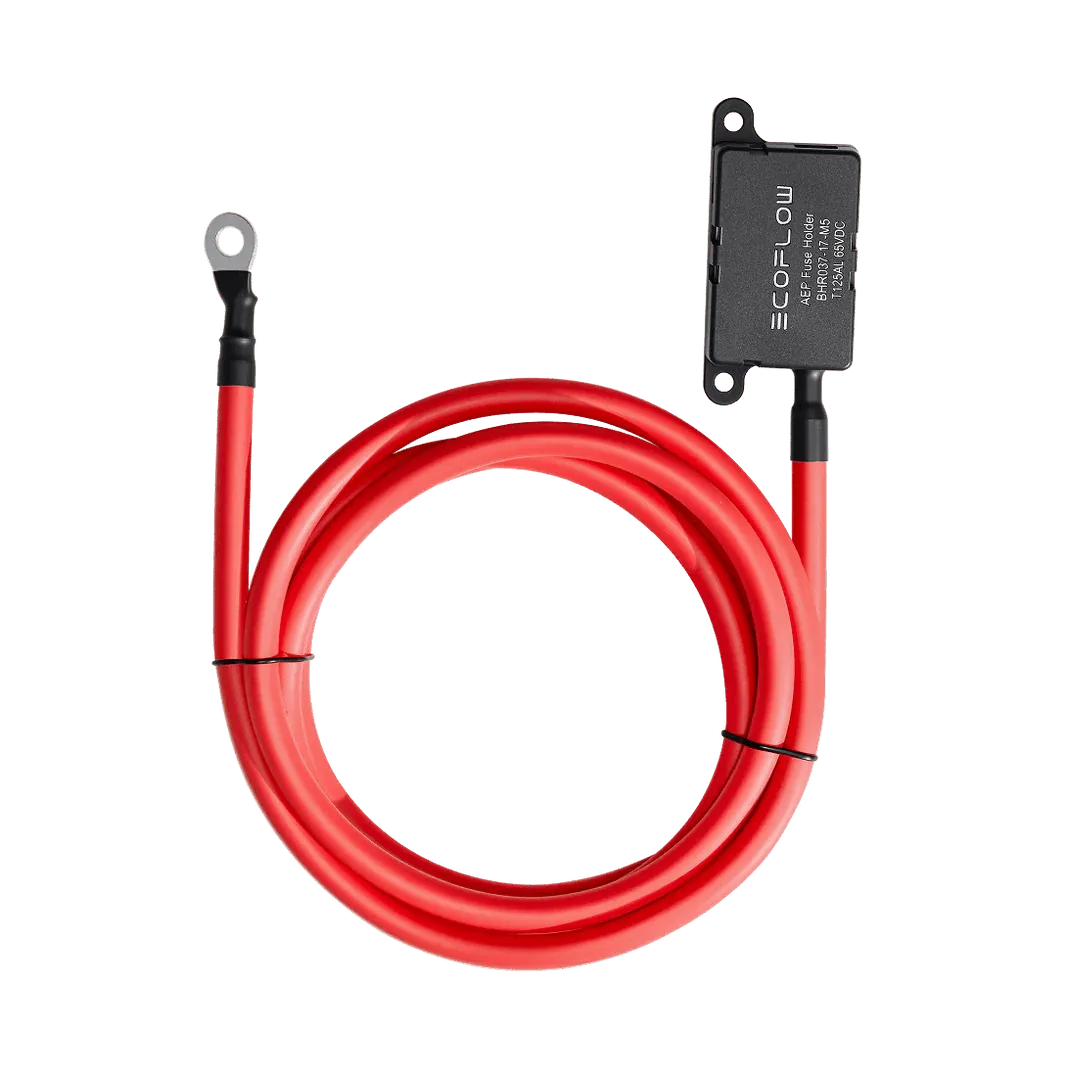
Price: $59
Specifications
The "Specification" screen is empty on the 500W model, whereas the 800W model lists all the expected specifications to the point you need to scroll to view everything. I assume this will be pushed in a firmware update before shipments arrive 📦.
Supports River and 3rd-Party Power Stations
With the new XT60i cable, EcoFlow added support to both models for River power stations and even 3rd-party power stations and batteries. I would love to have tested this with other power stations such as the River 3 Plus (XT60i), Delta 3 Plus (XT150), or Delta Pro 3 (with XT150 adapter). I would also be interested to see how it works with non-EcoFlow power stations. I think it’s pretty awesome that they have included support for other brands. I would love to see more of this in the power station industry. 💖
Improved Fuse Block
EcoFlow fixed the fuse block!!! 😍 They took mine and others' prior feedback and improved the inline fuse block. The old fuse block design was flawed; if too much strain was put on the cable it would cause the fuse to break which would result in an under voltage error and the inability to charge anything with the unit. I encountered this on my 800W model (I’m unsure which fuse block the current 800W model ships with currently as I preordered mine last year when it was announced).
To resolve my issue, I purchased a Blue Sea 7720 Safety Fuse Block ($25 on Amazon) which has separate posts for the fuse ends and the cables. The new design incorporates this separate post design. This helps prevent the issue where lateral strain on the cable would cause the fuse to shift and break.
The Blue Sea design is still superior (but larger) because it uses screws to tighten the fuse and nuts to tighten the cables; this helps prevent unintentional over torquing of the fuse which can also cause the fuse to break (less torque can be applied through a Phillips head screw vs a nut). EcoFlow recommends 3.5-4.5 N⋅m of torque. Also, EcoFlow’s new design got rid of the transparent window which is used to quickly see if the fuse is blown without needing to remove the cover (this is small issue but can still be useful).
I would love to see EcoFlow integrate both of these changes in the future (Phillips head screw for the fuse and a transparent window/cover), but overall this new fuse block is such a huge improvement. Awesome job EcoFlow! 👏
Fuse Type and Specification
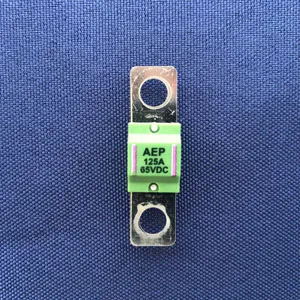
I would like to see EcoFlow sell the 125A AEP fuse (model AEP3125301, see data sheet) on their online store (and Amazon) and also recommend suitable 3rd-party replacements that are easy to obtain. If the fuse blows while someone is on the road, they need to be able to quickly source a new one that is commonly available. EcoFlow should clearly document the min/max requirements for the fuse (amps and volts) for each model instead of having customers try to reverse engineer something designed to prevent an electrical fire 🔥🧯.
The included AEP fuse is rated at 65V, however where it is placed it should be subject to no more than 31V based on EcoFlow’s specifications. Commonly available and similarly sized fuses (AMI/MIDI) aren’t rated for 65V so it would be very helpful if EcoFlow officially clarified this. If 32V fuses are safe to use, then Blue Sea Systems has many options available.
The EcoFlow fuse seems to be over spec’d (not in a good way) based on the stats of the 500W model (and perhaps even the 800W model). It’s also strange that both models use the exact same fuse to protect two different cable sizes: 6 AWG vs 8 AWG 😕. It feels like either they didn’t recalculate what fuse was needed for the 500W model or the fuse is there only to protect the EcoFlow device rather than to prevent an actual electrical fire 🔥🧯.
Calculating Fuse Size
⚠ Warning: I’m not an electrician or electrical engineer, please seek professional advice if planning on using a fuse different than what EcoFlow recommends!!!
According to EcoFlow, the max amps is 76A for the 800W model and 45A for the 500W model:
| 800W cable (6AWG) | 500W cable (8AWG) | |
|---|---|---|
| Max Amps | 76A | 45A |
| Max Volts | 31V | 31V |
Based on a guide from Blue Sea Systems and the specifications from EcoFlow, I calculated:
| 800W cable (6AWG) | 500W cable (8AWG) | |
|---|---|---|
| Min Fuse Rating 1 | 95A | 60A 2 |
| Max Fuse Rating 3 | 125A | 80A |
1) Minimum amp rating equals max product amperage x 125%. 2) Rounded up to nearest commonly available fuse size. 3) Assumes "single wire outside engine room" for cable size.
Assuming AEP fuses are spec’d similar to AMI/MIDI fuses, it appears the 800W model is fused at the complete upper limit of its max and may be better suited with a 100A fuse and the 500W model is fused way too high and should instead likely use a 70A fuse.
Based on my calculation, I understand these to be the correct fuse options:
If you fuse too high you risk an electrical fire 🔥🧯. If you fuse too low you risk the fuse blowing during normal operating conditions 🤯🤦♂️. When in doubt, fuse lower to prevent a fire.
Specification Comparison
While I was writing this I pulled out my old manuals (from a year ago) and noticed it referred to a 500W model and an XT60i cable 🧐. Apparently this has been the plan all along 🙀. It does make me wonder how much of the internals are the same. They definitely are different though as the 500W model weighs 1596g (3.5lbs) vs 2230g (4.9lbs) for the 800W model (main unit not including cables etc).
Install Instructions
Overall, the install instructions are clear and well designed 👌. They are a slight improvement over the instructions provided with the original 800W model (except that they are missing the info about reverse charge and battery maintenance modes that are available with the XT150 cable).
I would love to see EcoFlow provide specific install instructions for popular target vehicles (such as a Ford Transit, Mercedes Sprinter, etc.) and how to interface with their specific electrical systems. Check out my ✨ Ford Transit install guide.
Start Voltage Annoyance
New vehicles with smart alternators (to save fuel) can vary their voltage output which makes determining the "Start voltage" setting difficult. I have found myself on many occasions needing to adjust this value down while driving to trigger it to start charging, and then back up again while off to have it stop charging. 💡 Some vehicles have a relay built in that EcoFlow could make use of. Perhaps a small device could be used and then either wirelessly connect or connect via the RJ45 port on the charger.
Cable Remover
Another small improvement I would like to see EcoFlow make is having the cables not require the proprietary cable remover tool 😉. Ideally they would incorporate a button design similar to what is implemented on the Smart Generator Adapter instead of requiring a special tool to keep track of. Or at very least, provide a way for the tool to stow away onboard the device so it doesn’t get misplaced.
My Final Verdict
I can strongly recommend both models when paired with the XT150 cable! 👍👍
If you plan to use either model with the XT60i cable, I would wait until EcoFlow resolves the auto shut-off issue if you see that being an issue for you (especially if using with a smart alternator).
If your power station supports the XT150 cable, I would go with the 800W model. The current price difference is quite small ($349 vs $399) and you can limit the max charging of the device down as low as 100W if needed to support your vehicle’s needs (the XT60i cable cannot currently do this).
If your power station doesn’t support the XT150 cable, then check out the 500W model with the XT60i cable, however be aware of the restrictions and auto power off issue.
Just last year, I was highly considering either DIY-ing my own system (with components from Victron, Renogy, etc.) or trying to use a DC-DC boost converter through the XT60i port with a relay to switch between solar and alternator charging (since the Delta Pro only has one XT60 port). When EcoFlow announced the original 800W Alternator Charger it simplified everything for me! The cost and time savings were very significant! So much so that I placed a preorder ASAP. On long road trips I used to have to stop and charge every couple days (depending on use and before I installed solar), now it’s extremely rare to need to plugin unless I’m parked at the same location for several days (which doesn’t happen often for me) and there is no good sunlight (solar is awesome too, so cool these power stations can do both). 😍
Thank you EcoFlow and keep up the good work! 👍
Want a quick review of the information? Read my summary review (2 min) instead of this detailed one (16 min).
Need an install guide for a Ford Transit? Check out my Ford Transit install guide.
If you have any questions or feedback, please use the contact form or respond to one of my posts in one of EcoFlow’s Facebook groups and I will try to respond. If you found this useful or interesting, please share it with others.
* Unsure how auto-off is determined with the XT150. Mine stays on for quite a while; possibly multiple days.
** XT60 vs XT60i: yes, there is a difference and EcoFlow often refers to their XT60i cables as XT60.
- I’m not an electrical engineer or electrician but enjoy learning about different subjects.
- EcoFlow reached out to me in a comment on one of my previous reviews on Facebook.
- I was not paid for this review, but did receive a free 500W Alternator Charger as part of the beta program.

